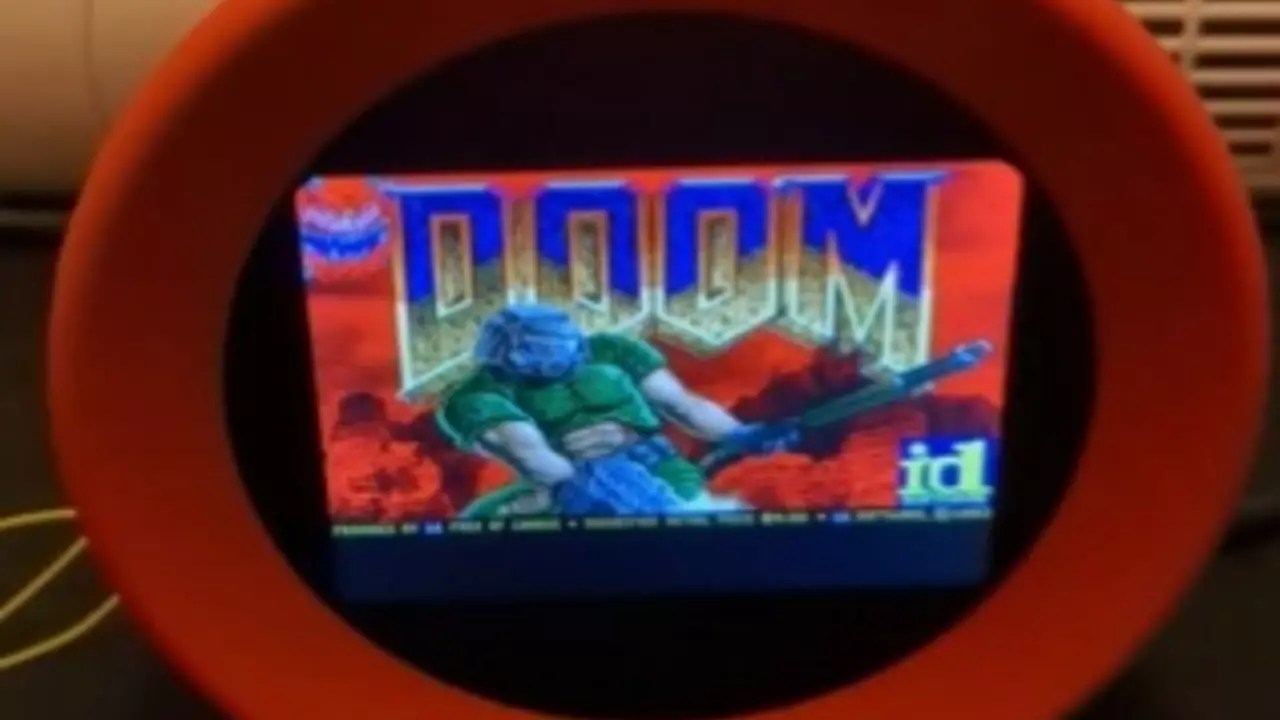In a world where technology is constantly evolving, it is not uncommon for unexpected innovations to emerge from well-established companies. Nintendo, renowned for its groundbreaking contributions to the gaming industry, has once again caught the attention of fans with its latest creation, Alarmo. This sound clock, which was initially overshadowed by the buzz surrounding Nintendo’s music app for smartphones, has unveiled an entirely new facet of entertainment. As its potential is explored, Alarmo stands not just as a functional device, but as a platform for creativity and gaming.
Alarmo took a significant leap in popularity following the contributions of social media user ‘GaryOderNichts.’ Known for his prowess in reverse engineering, he successfully unlocked the ability to run custom code on this innovative clock. This hack has opened up a myriad of possibilities, leading to the extraordinary inclusion of the iconic video game “Doom.” The fact that this classic game, characterized by its fast-paced action and retro aesthetic, is now playable on a simple clock raises eyebrows in both the gaming and tech communities.
What makes the Alarmo hack particularly intriguing is not just the ability to play Doom on it but also how it utilizes its physical features for gameplay. The clock’s buttons and knobs, typically reserved for setting alarms and adjusting volume, now serve a dual purpose as game controls. This innovative use of everyday functional design showcases how versatile modern technology can be. Imagine blasting demons from the underworld while you prepare for your day—a unique juxtaposition of productivity and recreation.
Despite the excitement surrounding this development, it’s important to acknowledge the limitations that currently plague this unexpected gaming experience. Gary reiterated that while Doom is indeed playable, there is presently no audio support. This absence of sound is due to memory size constraints associated with loading the game, indicating that while the tech behind Alarmo is impressive, it still offers room for enhancement. Furthermore, the necessity for loading the shareware version of Doom from USB shows that full functionality is contingent upon external modifications, hinting at a broader barrier to access for the average consumer.
For those intrigued by the inner workings of Alarmo and the hack that brought Doom to life, resources such as the shared source code and accompanying blog post provide insights into the process. Such transparency not only fuels curiosity but also invites more tech-savvy individuals to engage with the device, potentially leading to further innovations. The growing community around Alarmo opens up discussions about what functionalities and games could be integrated in future updates. With Nintendo’s rich history of game development, there is no shortage of possibilities.
As Alarmo continues to evolve, the gaming community watches with bated breath. What comes next for this quirky gadget? Would it be fruitless to ask for enhanced multimedia support? Or perhaps the anticipation lies with even more classic titles making their way onto the device? Ultimately, this unexpected mingling of timekeeping and gaming serves as a reminder: innovation knows no bounds, and sometimes, the most delightful surprises come from the unlikeliest of sources.


Leave a Reply